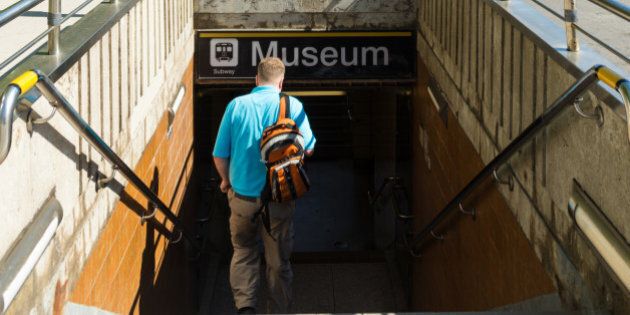
If you're planning on buying or renting a condo, here's an important lesson: purchase prices and rents will be higher the closer you are to major transit hubs such as subway stations.
Sure, it's convenient to be located adjacent to a subway stop, but it'll cost you. How much? We'll get to that in a minute. But if you're okay with a little walking between home and the station, you'll also be in for significant savings.
Andrew Scott, a senior market analyst of housing markets and indicators at Canada Mortgage and Housing Corp. (CMHC), attaches some hard numbers to the concept as it relates to the Toronto high rise market.
For new condos in the city, for example, the average purchase price per square foot for buildings less than 500 metres walking distance to the subway is $632. If you're willing to walk a little further, say between 500 and 999 metres, it'll cost you $595 per square foot; $557 between 1,000 and 1,999 metres; and $492 beyond 2,000 metres.
For renters, distance also pays -- or costs, depending on how you look at it. Average rents for a two-bedroom apartment less than 500 metres from the subway are about $1,477. Between 501 and 1,000 metres, the rate drops to $1,280, and to $1,158 from 1,001 to 1,500 metres.
"Being close to the subway matters more for renters than buyers," says Scott.
"Renters often have lower incomes than owners, and are younger as well. These households are more likely to value subway access since they are not able to afford, or do not want to own, a private car."
Proximity to transit as a key driver of real estate is not a new concept; we've long known that there's a price to pay for access and convenience.
"Distance is now measured in minutes, not kilometres," states the Real Estate Investment Network (REIN)as it sums it up transportation as one of the most dramatic catalysts for real estate growth.
Generally, one of the attributes coveted by homebuyers is proximity to a city's Central Business District (CBD). Access to good highway systems, mass transit and commuter rail is sought to afford easy access to the CBD.
The basic theory in real estate is that the more attractive the location, the higher the value of the home. As the demand for homes in that area expands, the result is higher housing values.
In its study of the Greater Toronto Area, REIN has found that transportation projects will deliver a 10- to 20-per-cent enhancement of real estate values in the regions most affected. If the market goes up everywhere, these areas will increase by about 10 to 20 per cent more. If the values drop, these areas will drop 10 to 20 per cent less.
The concept is not just a Toronto phenomenon, or even a Canadian one.
In studies of the effect of transportation improvements on real estate around the world, value increases have been found to occur for properties located within 500 to 800 metres of stations on new transportation lines.